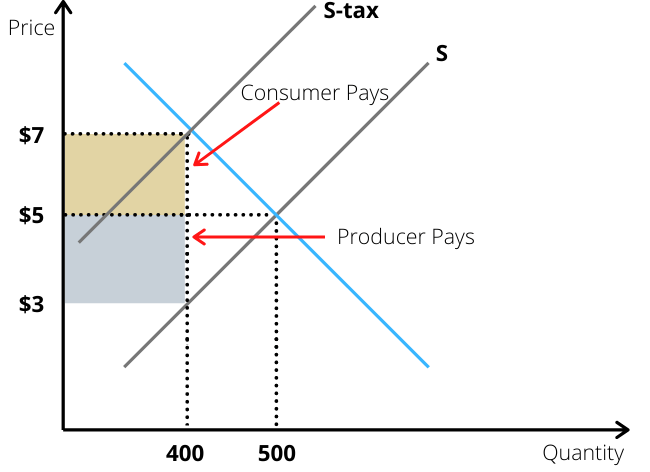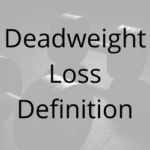Excise Tax: Definition, How it Works & Examples

What is an Excise Tax
An excise tax is a tax that is levied on certain products, usually in order to create a socially optimal outcome. For example, cigarettes, alcohol, and fuel are all types of goods that have an excise tax. Governments levy such taxes with aim of reducing consumption and thereby limit the health impact on the individual as well as society as a whole.
The excise tax is paid for by the producer, who may, in turn, pass those costs onto the customer, but must bear the burden. Often, the excise tax will lead to a combination of higher prices for the consumer and lower revenues for the producer.
Key Points
- An excise tax is also known as a ‘sin tax’ which is levied on goods that are deemed unhealthy for the individual, or bad for the environment.
- The excise tax is levied on each unit and is paid for by the producer.
- The excise tax is known as a ‘nudge’ in behavioural economics. By pushing prices up, it disincentivises consumption of ‘unhealth’ and un-environmentally friendly products.
Excise Tax vs Sales Tax
The excise tax may seem similar to a sales tax, but it is different in four key ways:
It is a Unit Tax
It is a unit tax, so it is based on a specific amount per unit. For instance, the US imposes an excise on beer that ranges between $0.11 to $0.58 per gallon. By contrast, a sales tax is an ad valorem tax that is based on the final value of the product and is calculated as a percent of this.
Narrow in Focus
Excise taxes are very narrow in focus and are limited to a small number of products. For example, such taxes specifically target individual products such as oil and gas, sugar, tobacco, and many others. This compares to a sales tax which is very general and broad in its focus. It is a general tax which the government applies
Aims at Reducing Consumption
The general aim of excise taxes is to reduce the consumption of goods that can cause individual harm, as well as create negative externalities. For instance, alcohol can cause harm to the individual, but also others if they decide to drive. In addition, nations that operate a national health service may face a health crisis as a result of an unhealthy population. High consumption of unhealthy foods that are high in trans-fats, salt, or sugar, may result in higher demand for cardiovascular treatment or many other health conditions. As a result, health services become in higher demand, leading to greater government spending on health.
It’s a ‘Hidden’ Tax
Unlike sales taxes, the excise tax is already paid for by the producer of the good – so it’s already baked into the price of the good and won’t show up on your receipt.
Excise Tax Examples
Some examples of excise taxes include:
Wine and made-wine
Governments can impose excise taxes on either the measurement of the wine, or, on its alcoholic content. For example, in the UK, government imposes a tax of £2.23 per 75cl bottle on still wines above 5.5% abv and up to 15% abv inclusive.
Beer
Similarly to wine, Beer faces an excise tax dependant on its volume or alcoholic content. For instance, as of 2021, the UK imposes a tax of 8.42 pence per litre for each percent of alcohol, on content between 1.2% and 2.8%. This increase to 19.08 pence per litre on alcoholic content between 2.8% and 7.5%. The excise tax then increases further for high alcoholic content beer that has 7.5% and greater. This increase to 24.77 pence per litre for each percent of alcohol.
Airlines
Most governments impose an excise tax on airline travel due to the high levels of emissions it releases into the atmosphere. There are often different bands of taxes that governments impose depending on the distance of travel. In the UK, these rates can range from £13 for a short flight, to £554 for a long first class flight.
Motor Fuel
Similarly to airlines, governments impose an excise tax on motor fuel (petrol) due to its negative effects on the environment. For example, the US imposes a tax of 18.4 cents per gallon for gasoline, and 24.4 cents per gallon on diesel.
Tobacco products
The effects of smoking are well known in 21st century. It can lead to cancer and lung problems, but it can also create negative health effects for those who breath in second hand smoke. As a result, governments look to try and reduce consumption by imposing quite significant excise taxes on them. Again, the tax rate can be complex depending on the type of tobacco. For example, in the UK, the excise tax for cigarettes are £262.90 per 1,000 cigarettes plus 16.5% of retail price. By comparison, the rate for cigars is £327.92 per kg and hand rolling tobacco is £302.34 per kg.
Biofuels
Biofuels are used for many various purposes ranging from diesel to the heating fuel. Each application itself has a different excise tax rate by which producers must pay. These tend to be tracked by the litre or gallon.
How the Excise Tax Works
It is a tax on the producer, so they have to pay for each unit they produce. We can look at is as a type of fine for producing bad products such as alcohol and tobacco.
The excise tax is paid for by the producer, but often these costs are passed onto the consumer to bear the tax burden. If we take an example of a large tub of ice cream. The ice cream sells for $5 and creates a demand of 500 units. Let’s say the government wants to introduce an excise tax on it. This shifts the supply curve to the left as shown below.
In turn, the producer raises the price of the ice cream to the equilibrium point of $7, with quantity falling to 400. As the excise tax is $4, this means everything in grey is government revenue. So, in this case, it is $4 x 400, which equals $1,600. Everything below this is producer revenue. So $3 x 400, which would equal $1,200.

Now, the government is making $1,600 in revenue, but who is paying for it? Well, in this case, it is split evenly between the producer and the consumer. The consumer pays the excess difference between the initial price and the new price. In this case, the price of the ice cream has increased by $2. The total quantity sold is 400, so the price paid by the consumer is $2 x 400, which equals $800.
The other half of the cost is subsequently borne by the producer, which would amount to $800.

FAQs
An excise tax is also known as a ‘sin tax’. This is because governments levy such taxes on unhealthy or unenvironmentally friendly goods such as sugary foods, salt, alcohol, tobacco, coal, gas, and oil.
Some examples of excise tax include alcohol, tobacco, oil, gas, and coal.
The main role of an excise tax is to reduce consumption. By artificially increasing prices, consumers will decrease consumption. In addition, the tax itself is designed to combat third party effects. For instance, nations with a national health service may be unduly burdened by unhealthy individuals. By imposing higher taxes on unhealthy products such as tobacco, governments are able to recoup some of the third party effects.
About Paul
Paul Boyce is an economics editor with over 10 years experience in the industry. Currently working as a consultant within the financial services sector, Paul is the CEO and chief editor of BoyceWire. He has written publications for FEE, the Mises Institute, and many others.

Further Reading
 Common Market Definition and Examples - A common market is a way for countries to work together by allowing the free movement of goods, services, capital,…
Common Market Definition and Examples - A common market is a way for countries to work together by allowing the free movement of goods, services, capital,…  Deadweight Loss: What it is, Formula & Examples - A deadweight loss is a loss in economic efficiency as a result of disequilibrium of supply and demand. In other…
Deadweight Loss: What it is, Formula & Examples - A deadweight loss is a loss in economic efficiency as a result of disequilibrium of supply and demand. In other…  Hindsight Bias: Definition & Examples - Hindsight bias is where an individual claims to have been able to predict an event after it has happened.
Hindsight Bias: Definition & Examples - Hindsight bias is where an individual claims to have been able to predict an event after it has happened. 